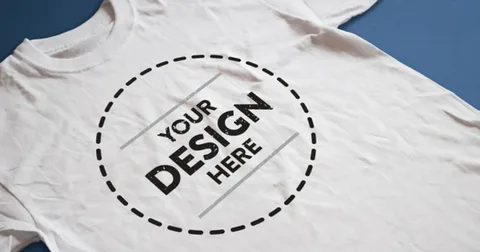How to Print Logos on Clothes Methods, Trends, and Expert Tips
In an era where brand identity is everything, logo printing on clothes has emerged as a powerful tool for businesses, startups, and even individuals looking to stand out. Whether you’re a fashion brand, a corporate team, or a sports club, having your logo printed on garments offers visibility, unity, and professionalism.
As of 2025, the industry has evolved significantly. With innovations in textile printing technology, more sustainable materials, and increased consumer demand for personalization, understanding the ins and outs of logo printing is more crucial than ever.
This comprehensive guide explores the latest trends, printing methods, and best practices, helping you make informed decisions that align with your branding goals.
Why Logo Printing on Clothes Matters
1. Brand Visibility
Logo printing on clothes apparel acts as a walking billboard. Every time someone wears your t-shirt, hoodie, or uniform, your brand gains exposure.
2. Professional Identity
Whether you’re outfitting employees or event staff, logo-branded clothing enhances your team’s appearance and fosters a cohesive identity.
3. Marketing on the Move
Printed clothing is a cost-effective marketing tool that offers long-term value, particularly when compared to one-time ad campaigns.
4. Customer Engagement
Brands often use logo merchandise as giveaways or loyalty rewards, turning customers into brand ambassadors.
Popular Logo Printing Methods in 2025
Understanding different printing techniques is essential to ensure your design is executed correctly and cost-efficiently. Below are the most reliable and widely-used methods today:
1. Screen Printing
Overview:
A traditional method that uses a stencil (or “screen”) and layers of ink.
Pros:
- Best for large orders.
- Vibrant, long-lasting colors.
- Economical for bulk printing.
Cons:
- Not ideal for small batches or highly detailed logos.
- Limited color flexibility.
Best For:
Company uniforms, promotional t-shirts, and event merchandise.
2. Direct-to-Garment (DTG) Printing
Overview:
Uses inkjet technology to print directly onto fabric.
Pros:
- High-resolution, full-color printing.
- Perfect for detailed designs and gradients.
- Suitable for small runs and one-offs.
Cons:
- Slower production time.
- Works best on 100% cotton garments.
Best For:
Small businesses, fashion designers, and print-on-demand stores.
3. Heat Transfer Printing
Overview:
Applies heat and pressure to transfer designs from vinyl or transfer paper onto fabric.
Pros:
- Ideal for low-volume orders.
- Great for customization and one-off prints.
- Works on various materials.
Cons:
- Designs may crack or fade over time.
- Less breathable on larger prints.
Best For:
Custom team uniforms, limited edition items, and DIY projects.
4. Embroidery
Overview:
Involves stitching the logo directly onto the garment using threads.
Pros:
- High durability and a premium look.
- Adds texture and dimension.
- Works well on thicker materials like polos and jackets.
Cons:
- Not suitable for intricate designs or gradients.
- Costlier than printing methods.
Best For:
Corporate wear, hats, and high-end uniforms.
5. Sublimation Printing
Overview:
Dye is infused into the fabric using heat and pressure, becoming part of the material.
Pros:
- No peeling or cracking.
- Excellent for full-coverage prints.
- Lightweight and breathable.
Cons:
- Only works on polyester fabrics.
- Not ideal for dark-colored garments.
Best For:
Sports apparel, performance wear, and promotional gear.
How to Choose the Right Printing Method
Selecting the right best t-shirt printing melbourne technique depends on several factors:
- Budget: Screen printing is cost-effective for bulk, while DTG suits smaller orders.
- Material: Sublimation requires polyester, embroidery suits thicker fabrics.
- Design Complexity: DTG handles detailed designs better; embroidery is better for simplicity.
- Quantity: Bulk orders favor screen printing; heat transfer is ideal for small runs.
Logo Placement Options
Strategic placement can enhance both aesthetics and visibility. Here are common options:
| Placement Area | Common Use |
|---|---|
| Left Chest | Professional uniforms |
| Center Front | T-shirts and promotional wear |
| Sleeves | Secondary branding or hashtags |
| Back Center | Staff or event apparel |
| Hem/Tag Area | Subtle brand marks |
Tip: Consider symmetry, garment type, and audience perception when choosing placement.
Logo Printing Trends in 2025
1. Sustainability in Printing
With eco-consciousness rising, businesses are shifting toward water-based inks, organic fabrics, and eco-friendly print shops.
2. Hyper-Personalization
Consumers demand unique designs. Brands are now offering user-generated logo customization using AI and digital tools.
3. Augmented Reality (AR) Previews
Innovative companies provide virtual garment previews via AR apps, improving user experience and reducing return rates.
4. Textured and 3D Printing
Emerging methods like puff ink and 3D embroidery offer tactile, eye-catching results.
5. Minimalistic Logos
Brands are leaning toward simplified logos for better visibility, cost-effectiveness, and compatibility across platforms.
Common Mistakes to Avoid
Avoiding these pitfalls can save you time and money:
- Using Low-Resolution Logos: Always supply vector files (AI, SVG, EPS) for the best print quality.
- Ignoring Fabric Type: Each printing method has fabric-specific limitations. Always consult your printer.
- Overcomplicating the Design: Intricate logos may not translate well across all printing methods.
- Neglecting Color Contrast: Ensure your logo color stands out against the fabric background.
- Choosing the Wrong Vendor: Work with reputable, experienced printers who can offer expert guidance.
Expert Tips for Successful Logo Printing
- Work With Designers: Collaborate with a graphic designer to optimize your logo for textile printing.
- Order Samples: Always test print before bulk production to check quality, fit, and color.
- Consider the End-Use: Is the clothing for daily wear, events, or promotions? Choose quality accordingly.
- Maintain Brand Consistency: Ensure all garments match your brand’s visual guidelines.
- Plan for Scaling: As your brand grows, consider suppliers who can scale with your needs.
Finding Reliable Logo Printing Services
Look for services that provide:
- Transparent pricing and turnaround times
- Sample previews and mock-ups
- Multiple printing options and garment types
- Sustainable practices and certifications
- Positive customer reviews and portfolio work
Trusted platforms like Printful, TeeSpring, Custom Ink, or local print shops with strong reputations can be excellent starting points.
Conclusion
Logo printing on clothes is more than just adding a design to fabric—it’s about building brand identity, engaging with audiences, and showcasing professionalism. In 2025, with technological advancements and rising consumer expectations, choosing the right method and partner has never been more important.
By understanding the different techniques, staying on top of trends, and making informed choices, you can ensure your logo makes a lasting impression—both on garments and on your audience.












